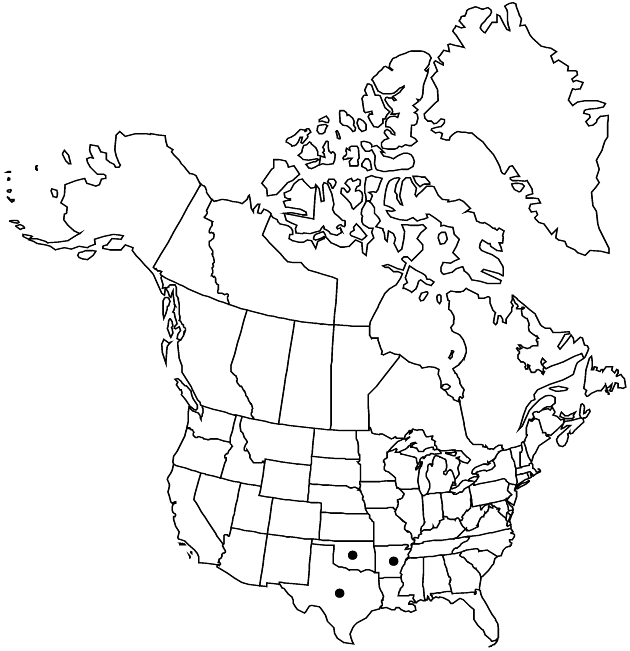Difference between revisions of "Helenium elegans"
in A. P. de Candolle and A. L. P. P. de Candolle, Prodr. 5: 667. 1836.
imported>Volume Importer |
RevisionBot (talk | contribs) m (Bot: Adding category Revised Since Print) |
||
| Line 62: | Line 62: | ||
}}<!-- | }}<!-- | ||
| − | -->[[Category:Treatment]][[Category:Helenium]] | + | --> |
| + | |||
| + | [[Category:Treatment]] | ||
| + | [[Category:Helenium]] | ||
| + | [[Category:Revised Since Print]] | ||
Latest revision as of 19:31, 6 November 2020
Annuals, 20–120 cm. Stems usually 1, branched distally, moderately to strongly winged, glabrous or sparsely to moderately hairy. Leaves glabrous or sparsely hairy (basal withered by flowering); proximal and mid blades lanceolate to narrowly elliptic, entire, serrate, or irregularly toothed or lobed; distal blades lanceolate to linear, entire. Heads 20–200+ per plant, in paniculiform arrays. Peduncles 2–14 cm, moderately to densely hairy. Involucres globoid, 5–11 × 5–12(–13) mm. Phyllaries (connate proximally) moderately to densely hairy. Ray florets 10–17, pistillate, fertile; corollas yellow throughout or red-brown to red proximally and yellow distally, 5.5–15(–19) × 2.2–5.5(–8.7) mm. Disc florets 150–700+; corollas yellow proximally, yellow to brown to usually reddish brown distally, 1.5–2.3(–2.5) mm, lobes 5. Cypselae 0.6–1 mm, moderately hairy; pappi of 6–7 entire, non-aristate scales 0.05–0.3(–0.4) mm.
Distribution

Ark., Okla., Tex., n Mexico.
Discussion
Varieties 2 (2 in the flora).
Selected References
None.
Key
| 1 | Proximal leaves usually entire, rarely serrate; involucres 5–8 × 5–8 mm | Helenium elegans var. elegans |
| 1 | Proximal leaves usually irregularly toothed or lobed; involucres 7–11 × 8–12(–13) mm | Helenium elegans var. amphibolum |